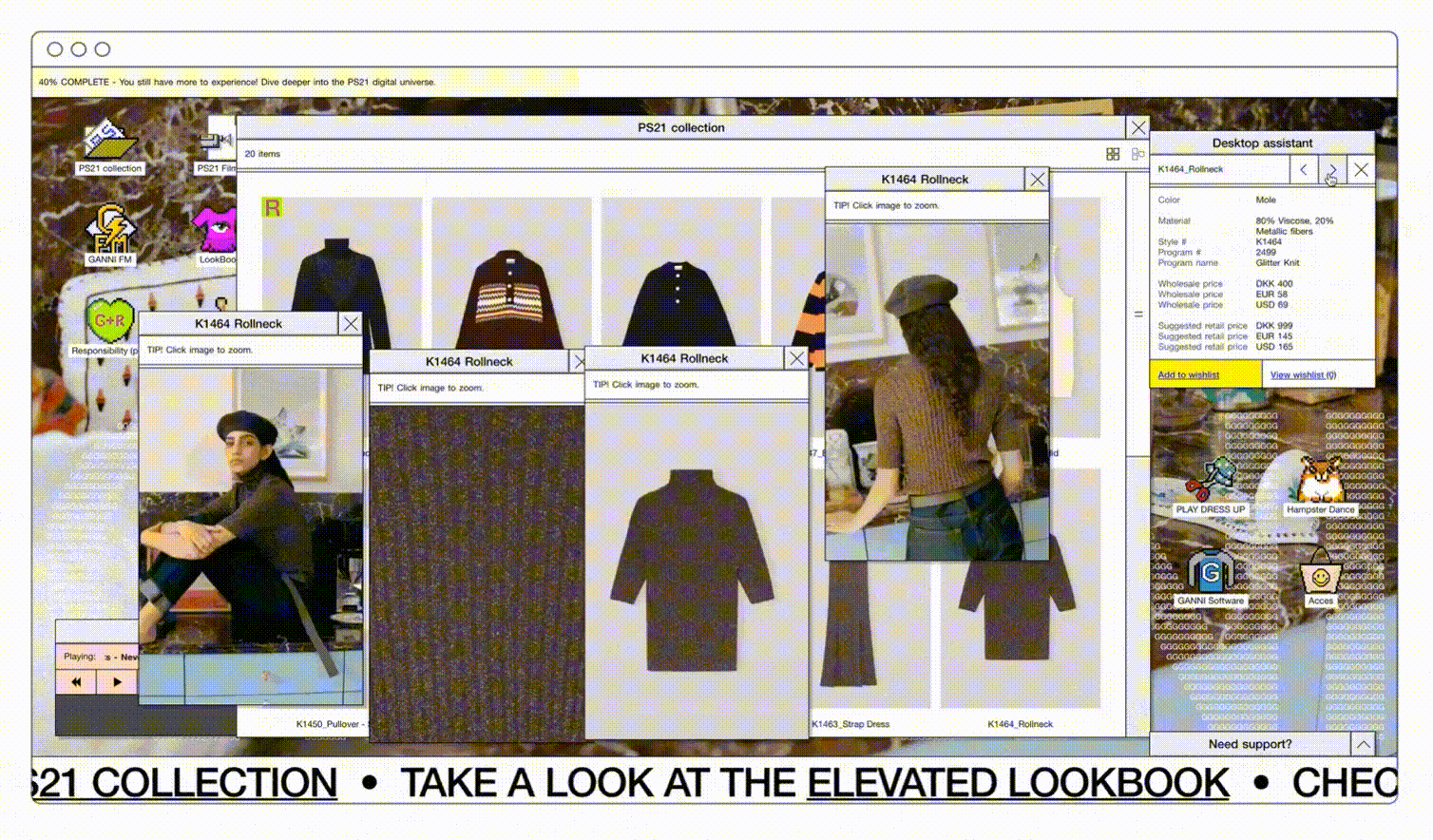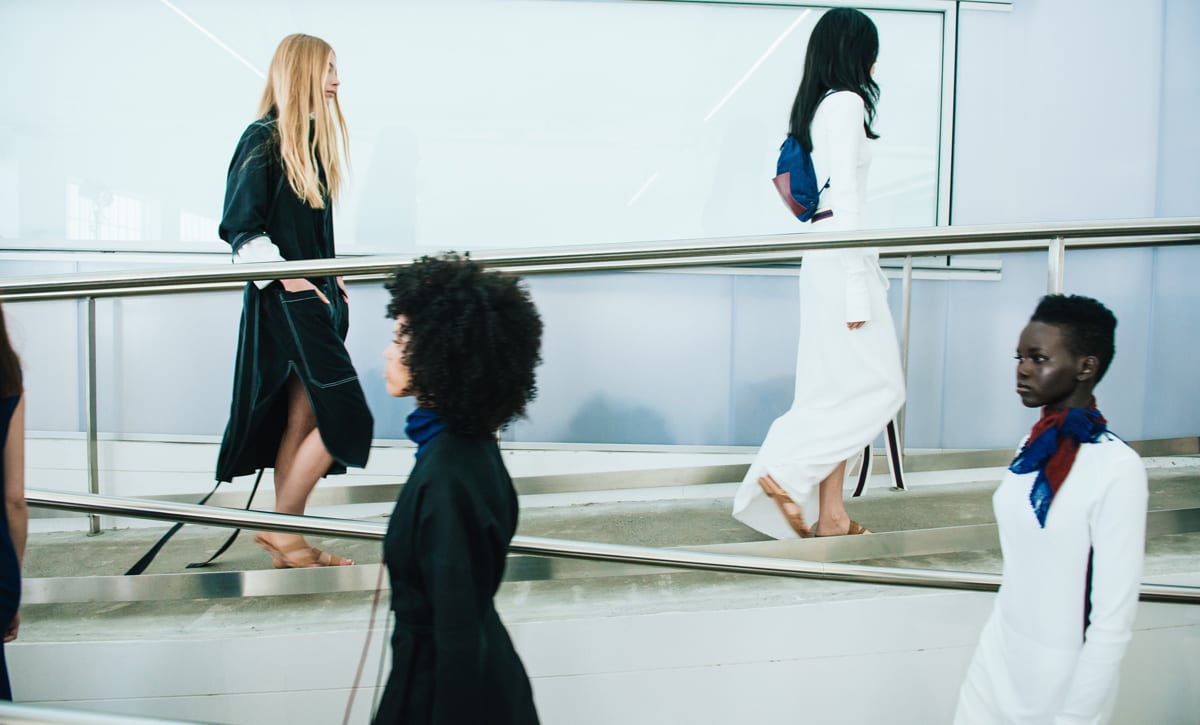Technology has stripped away the exclusivity that has defined one of the world’s most critically acclaimed trade events. Before covid-19, more than 5,000 international press, buyers and vi ps would flock to the uk capital for London Fashion Week; but this year, anyone could grab a front-row seat straight from their device. How did the fashion industry take advantage of this digital reinvention? We took a look at how London Fashion Week (LFW) welcomed a wider audience into its elite world.
The five-day digital event was the first of the “Big Four” global fashion weeks to take the catwalk experience online; with a public-facing platform that merged live and pre-recorded runway shows, films, presentations, lookbook shoots and installations from breakthrough designers to the biggest names in the business, including Burberry, Vivienne Westwood, Victoria Beckham and Emilia Wickstead.
Pushing boundaries
The packed LFW schedule gave an insight into how the fashion industry has been remodelled during the pandemic, using a storytelling approach to reveal what the industry’s new normal might look like. As time has progressed, so have societal attitudes and how people think about how they dress. LFW was a fitting way to mark this new era in fashion with gender, sustainability and escapism at the forefront. It was kicked off by kai-isaiah jamal, a spoken word performer, model and trans visibility activist, in the black and white video: We Applaud Here.
This iteration of LFW was the first to present as genderless, combining previously separate events for womenswear and menswear, while providing space for brands to amalgamate collections and explore avenues in between. Bethany Williams, the recipient of the A/W 2021 Queen Elizabeth II Award for British Design, revealed her gender-neutral capsule coat collection, made from upcycled vintage blankets the designer personally sourced on trips around the UK.
Gender-fluid looks continued throughout the week and were worn by ru paul’s drag race uk’s front-running contestants a’whora and bimini bon boulash. The duo made their runway debut for Art School, a genderless London-based brand, respecitvely wearing an oversized leather blazer and a slashed coat made from recycled materials.
Look out for innovative newcomers
Emerging young designers were commended for pushing the creative envelope, signifying a promising future for the industry. After graduating from central saint martins during the pandemic, Harris Reed made his LFW runway premiere. He presented a demi-couture edit with punk at its core, while he continues to prepare his ready-to-wear collection. The breakthrough designer has already made a name for himself for putting Harry Styles in a dress on the cover of Vogue and revolutionising self-expression through style.
The digitisation of lfw also provided a pathway for upcoming designers who do not yet meet the main schedule criteria to introduce themselves. In addition to the official lfw designers, over 100 new profile pages were created, enabling these designers to upload their latest work and contact information alongside supporting links or social media accounts. Tik tok also entered into a partnership with newgen, the british fashion council support scheme for emerging talent, to provide mentoring sessions and fashion masterclasses.
The discovery lab series further supported up-and-coming brands with opportunities to feature short films that encapsulated their creative visions throughout the week. Adding to the digital experience was the ‘explore’ section, sharing stories of london’s individuals and businesses, rich in creative freedom and culture through podcasts, designer diaries and playlists.
Driving engagement with live events
Despite the absence of action around the city, there was a strong response from the at-home audience. On social media, the #LFW hashtag was brimming with couture fans showing off their own looks as they watched the future of fashion unfold. One of the biggest reactions followed Bora Aksu’s audience-free runway show at Tate Britain.
A significant digital highlight was launched by The Institute of Digital Fashion in partnership with independent luxury concept store Machine-A, which allowed the public to explore a digital rendering of the Soho boutique through an AR Instagram filter. QR codes were plastered on billboards around central London and once scanned, access was granted to the live experimental showing of A/W 2021 collections from leading designers including Richard Quinn and Martine Rose. Intended to raise awareness of the brands carried by Machine-A, the virtual shop featured unfinished pieces and personal messages from each designer explaining their inspiration behind each product.
Opening up LFW to the internet certainly escalated its global impact; consumers gained access, while brands were able to gauge sentiment and receive immediate feedback prior to products entering the market.
Entering the realm of buying and selling
As fashion consumers get an inside look, lfw designers could mark themselves as ‘open for wholesale’ and notify buyers they were available to discuss opportunities. If the designer or brand accepts a request, the buyer is sent an invitation to its password-protected wholesale area, hosted on the lfw JOOR platform. The private area featured advanced functionality for buyers to view seasonal lookbooks, line sheets and products in 360-degree imaging. It also allowed brands and retailers to manage their connections and appointments, as well as place digital orders.
A custom virtual showroom allows businesses to communicate their brand story even after the show. DEPT® worked with the Scandinavian cult brand GANNI to reinvent its wholesale offering and buying experience. Four times a year, their sales team would travel to Paris, London and New York for sales appointments. Its Pre Spring 21 collection was scheduled to be sold to buyers in May 2020. However, COVID-19 disrupted the company’s plans, forcing them to quickly re-imagine the way that they connected with their B2B buyers and presented their newest collection. In just six weeks DEPT® created a unique and immersive showroom experience, which featured a personalised playlist, a lookbook that combines both video and still elements, campaign imagery as well as private folders and dress-up dolls. The showroom enabled 600 buyers to discover a more personal side to the fashion brand, browse the newest collection and save any items they wish to buy.

Brands that are flexible and offer personalised solutions are developing a new sense of community through regular digital appointments outside of traditional buying seasons. Factoring in data around how specific customers have adapted to limitations gives more buyers confidence in developing a partnership approach throughout this recovery period.
Taking forward steps with technology
As buyers continue to face the burden of not being able to see and touch merchandise, london fashion week has been a prime example of how strides can be made to address challenges with digital solutions; but the showcase also uncovered opportunities where new technology can be used to innovate.
The digital-only event gave designers a platform to flaunt their inspiration, allowing consumers and buyers to gain insight into the creative process by adding meaning and context to products and their materials. However, when it came to viewing the products themselves, consumers only got a glimpse. The basic designer profile pages featured a text bio, a collection of static images and a pdf lookbook. It was the same format throughout the site, with the addition of embedded videos from you tube on the discovery lab section, which was intended to be an experiential space where fashion meets art, technology and music to evolve the show’s digital capacity.
It would be more fitting to see this content encapsulated in an immersive hub, enabling users to interactively explore collections and content categorised by themes, in a similar way to how DEPT® reinvented its annual festival with a 3D virtual map. Within fashion, we’re already seeing how VR is reinventing the in-store experience, with brands now offering shoppers a 360-degree, 3D e-commerce experience and supplementary apps to try on products. Introducing elements of AR and VR would have further humanised the event by creating a stronger connection with the audience, which otherwise was missing.
After each session was live-streamed, the recording swiftly moved to the on demand ‘catch up’ section without any commentary or indication of what was next. Adding a live-streamed host introducing key events and behind the scenes video, or instant message reactions from key fashion editors or brand executives would have also been a great way to add another dimension to the event experience.
Merging this human element would have created a stronger emotive connection for those viewing and help to spark a wider conversation on social media. All and all, the first digital edition of london fashion week was a significant leap forward; but we’re hoping next year’s agenda will better blur physical and digital events in a format that’s, again, open to the world.





